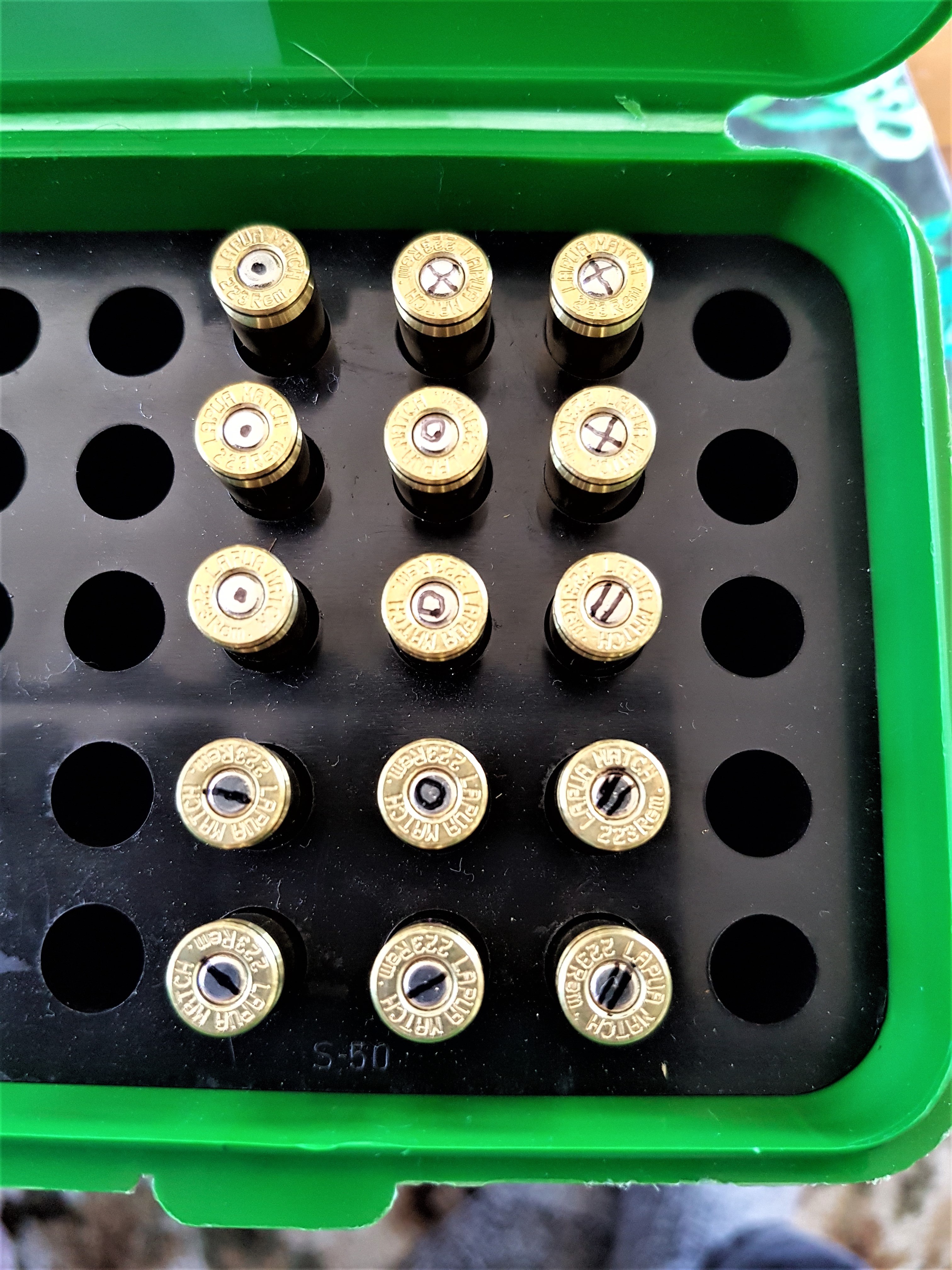What MD said. Treat them them same as your starting loads from the low end so have some inbuilt safety already.
Welcome guest, is this your first visit? Create Account now to join.
Welcome to the NZ Hunting and Shooting Forums.
Search Forums
User Tag List
+ Reply to Thread
Results 31 to 36 of 36
-
16-01-2021, 12:51 AM #31Member

- Join Date
- May 2012
- Location
- Sydney
- Posts
- 1,825
-
-
16-01-2021, 08:06 AM #32
-
16-01-2021, 10:59 AM #33Member

- Join Date
- May 2019
- Location
- Rotorua
- Posts
- 192
@Happy Jack when I work up loads I always mark the primer with a felt pen with various symbols and record the symbol and weight on a piece of paper that goes with me to the range.
If your cases aren't marked and you accidentally tip your loading block over there is no way of knowing which weight the loads are.
Here is a photo of what I normally do.
-
16-01-2021, 12:39 PM #34
@Tech great idea, I was thinking how to know without writing on the cases
-
16-01-2021, 01:49 PM #35Member

- Join Date
- Dec 2019
- Location
- Okawa Hawkes Bay
- Posts
- 3,200
Greetings Happy Jack,
If you are able to chronograph those loads they will give you an indication of pressure. If not then you could try a few more .2 grain steps. Best save them for a calm day and definitely remember your sand bag. When testing you need to be as steady as possible. I use a front rest and a rear bag. I also place my non trigger hand on top of the scope to damp the movement. Once your development is complete then final sighting in should mimic how you would shoot in the field. As Micky says below your post you can use loads for cup and core projectiles (your projectiles are such) with most load data. I would go with the Hodgdons data. Once you have a load that shoots OK load 10 or so and use them for hunting while you refine the load over time. One last thing you need a decent aiming mark. A hollow square or circle is best. I use NZDA 50 and 100 metre targets but you can make some with red insulation tape on paper, A3 or larger. As an old draughtsman I have a lifetime supply of old plans that I use.
Regards Grandpamac.
Similar Threads
-
Reload of 204
By Paua Pete in forum Reloading and BallisticsReplies: 5Last Post: 02-12-2019, 12:57 PM -
9mm reload
By paulbrady in forum Reloading and BallisticsReplies: 15Last Post: 21-03-2018, 04:04 PM -
Why reload??? (Just for fun!)
By PERRISCICABA in forum Reloading and BallisticsReplies: 3Last Post: 11-10-2015, 11:57 AM -
223 die to reload 222!!
By robh500 in forum Reloading and BallisticsReplies: 2Last Post: 26-01-2014, 11:49 AM -
Somebody to reload for me??
By waimobenj in forum Reloading and BallisticsReplies: 6Last Post: 27-09-2013, 11:56 PM
Tags for this Thread
Welcome to NZ Hunting and Shooting Forums! We see you're new here, or arn't logged in. Create an account, and Login for full access including our FREE BUY and SELL section Register NOW!!





 21Likes
21Likes LinkBack URL
LinkBack URL About LinkBacks
About LinkBacks



 Reply With Quote
Reply With Quote



Bookmarks